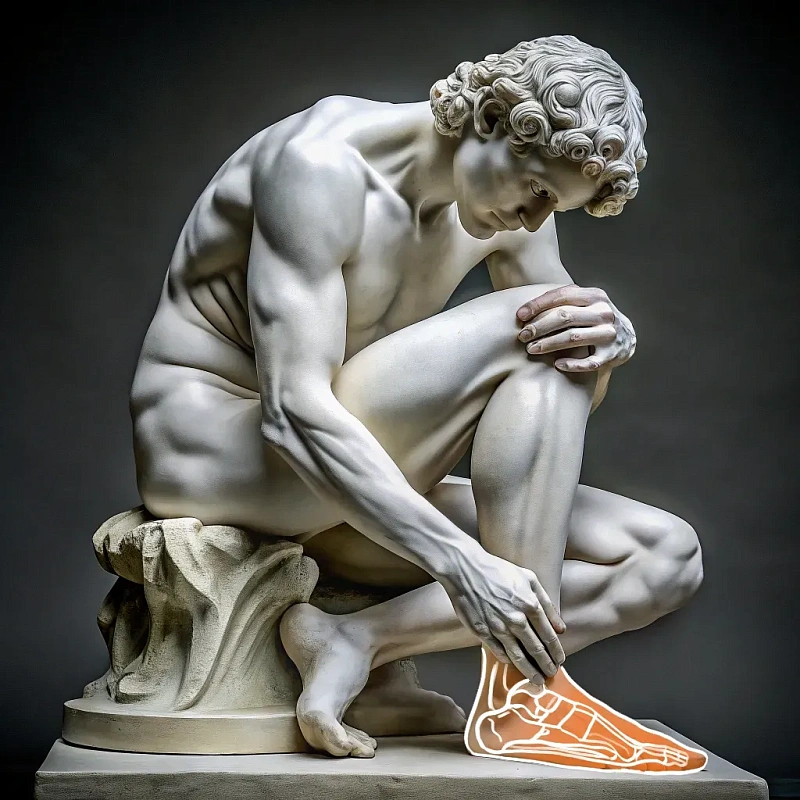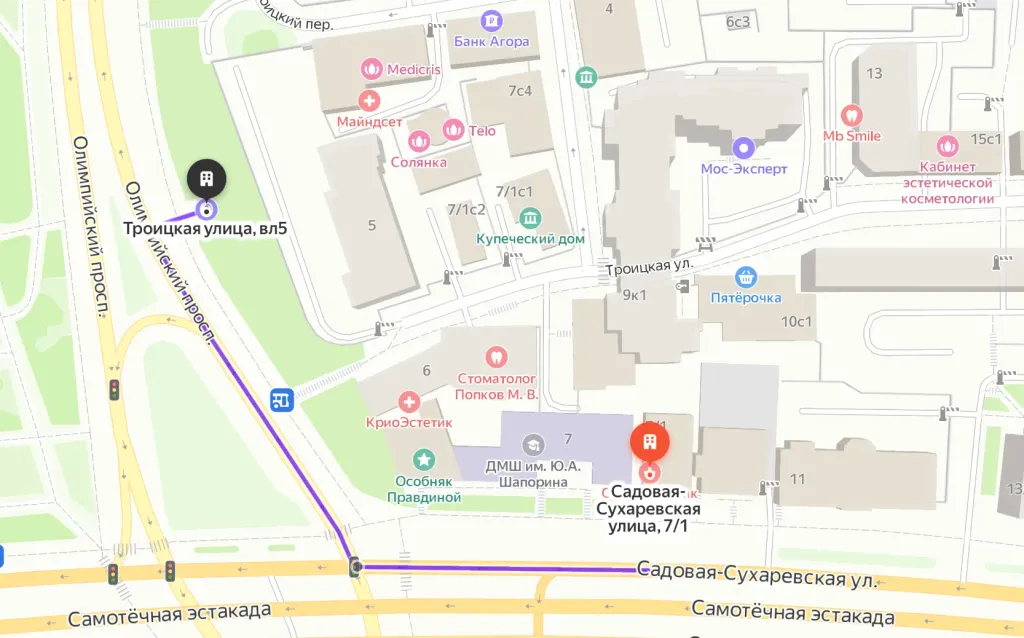Minimally invasive surgery of the forefoot
This is a modern mini-foot surgery that allows you to eliminate various pathologies with minimal surgical intervention. The method is characterized by a small incision size, a shortened recovery time and a reduced risk of complications.

Unlike traditional surgery, minimally invasive techniques can significantly reduce surgical trauma, which is especially important for patients seeking a quick return to normal activity.
Also, thanks to the use of specialized tools and techniques, the surgeon can eliminate pathologies with minimal damage to soft tissues and bones. This leads to a reduction in postoperative pain and a reduction in the risk of complications. Minimally invasive procedures also provide the best cosmetic effect, as small incisions leave minimal scars. Patients can return to their daily activities faster and feel more confident.
General blood and urine analysis Coagulogram (assessment of blood clotting) ECG (electrocardiogram) to assess the condition of the heart Radiography of the foot Computed tomography (CT) or magnetic resonance imaging (MRI)
During a minimally invasive operation, the surgeon makes one or more small incisions (about 3-5 mm). Special surgical instruments and a miniature video camera are inserted through these incisions. This allows the surgeon to accurately see the internal structures of the foot and perform the necessary manipulations, such as removing bone outgrowths, correcting finger deformities or removing neuromas.
Endoscopic instruments providing minimally invasive access Imaging systems: X-ray machines and computed tomographs
After minimally invasive surgery, the recovery period is usually shorter than after traditional open surgery. Most patients can return to light activity after a few days. Full recovery usually takes place within a few weeks. The doctor may prescribe physical therapy, special exercises or wearing orthopedic shoes to speed up the healing process and improve results.
Benefits
Improving the functionality of the foot
Correction of deformities and elimination of pathologies restore the functions of the foot.
Aesthetic result
The natural structure of the foot returns, its appearance improves.
Reducing discomfort
The operation allows you to get rid of pain and return to an active life.
Frequently Asked Questions
What are the indications for minimally invasive surgery of the forefoot?
How long does the rehabilitation last?
Is it possible to walk immediately after surgery?
How does minimally invasive surgery differ from traditional surgery?
Didn't find an answer to your question?
You can describe your problem in detail and ask a question to the doctor. He will answer you and help you find a solution
Specialists
Find a SpecialistSimilar referral activities
Arthroscopy of the ankle joint
Ankle arthroscopy is a minimally invasive surgical procedure used to diagnose and treat various diseases and injuries of the ankle joint.
Arthroscopy of the ankle joint
Ankle arthroscopy is a minimally invasive surgical procedure used to diagnose and treat various diseases and injuries of the ankle joint.
Arthroscopy of the knee joint
Knee arthroscopy is a minimally invasive surgical procedure for the diagnosis and treatment of injuries and diseases of the knee joint. It allows examining the joint for damage and eliminating the identified defects.
Arthroscopy of the knee joint
Knee arthroscopy is a minimally invasive surgical procedure for the diagnosis and treatment of injuries and diseases of the knee joint. It allows examining the joint for damage and eliminating the identified defects.
Arthroscopy of the elbow joint
Arthroscopy of the elbow joint is a minimally invasive surgical intervention that allows for accurate diagnosis and simultaneous treatment of joint injuries.
Arthrodesis of the joints of the fingers of the hand
The destruction of the joints of the fingers of the hand is accompanied by pronounced pain and impaired functions. Arthrodesis is a surgical intervention in which the affected joint is completely immobilized, which relieves pain and progression of inflammation.
News & Media
All news and mediaIX ASTAOR International Congress: New Solutions in Sports Medicine
On April 4 and 5, 2025, the IX ASTAOR International Congress was held — a large-scale meeting of specialists in the field of sports traumatology, orthopedics, arthroscopy and rehabilitation. Doctors, nurses, rehabilitologists and other professionals from different cities of Russia and the world came to share their practical experience and discuss current injury treatment technologies.
Olymp Clinic MARS has now become an official partner of Peoples' Friendship University of Russia.
Olymp Clinic MARS extends beyond providing high-quality medical care to serve as a comprehensive scientific and educational platform. The clinic will host training events for students, residents, and postgraduates, while physicians will have the opportunity to enhance their qualifications.
Progressive Arthroscopy: The conference in Voronezh welcomed Professor Andrey Korolev as a distinguished guest.
An interregional scientific and practical conference, entitled "Advanced Arthroscopic Treatment in Traumatology and Orthopedics," was held in Voronezh on November 1-2. The event convened over 120 specialists from across Russia, including traumatologists, orthopedists, and rehabilitation specialists.
Andrey Korolev appreciated the launch of the Crew Dragon spacecraft
The first manned spacecraft in almost a decade has been successfully launched in the United States. According to many experts, the launch of the world's first private spacecraft marks a new era in space exploration.
Slipped, fell, woke up — plaster cast: about fracture treatment
A bone fracture is a common injury that almost everyone has been through. Although human bones are very strong, if the external force is too great, they can break like a plastic ruler when it is bent too much. In the article we will tell you how to act in case of a fracture.
Summer injuries: first aid for bruises, dislocations and sprains
Summer is a time for walking, outdoor activities and sports. The sun and warm weather encourage us to spend more time outside and enjoy nature. But the more we move, the higher the risk of injury becomes. It is not surprising that bruises and dislocations become frequent companions of summer leisure. Of course, in case of serious injuries such as fractures, it is necessary to consult a doctor immediately. But what to do with less significant injuries — minor bruises, sprains with slight swelling and pain? In such cases, you can help yourself and others on your own, knowing the basics of first aid. In this article, we will tell you how to cope with injuries sustained during summer activities and quickly return to your usual lifestyle.
What is the danger of flat feet and how to treat it?
Flat feet are an orthopedic problem in which the shape of the foot changes, its longitudinal and/or transverse arch decreases. Normally, the arches of the foot are responsible for cushioning and even distribution of the load when walking and running. But with flat feet, the foot cannot spring properly, which increases the load on the bones, joints and muscles of the legs.
What should I do if my ligaments are damaged?
Ligament damage is an injury in which there is a violation of the integrity of the fibers that make up the ligaments. Ligaments connect bones to each other, stabilizing joints and preventing their excessive movement. They are made up of collagen fibers, which give them strength and elasticity. But under the external influence of the ligament, the length of the ligaments almost does not change, so the fibers can rupture. Ligaments are damaged due to excessive stretching or sudden movement exceeding their normal amplitude. This can happen if you land incorrectly after a jump, fall, abruptly change the direction of movement or a direct blow to the joint.
How to reach
How to get
From the Belorusskaya metro station of the Zamoskvoretskaya line - exit 4 After exiting the subway, walk through the pedestrian tunnel and climb the stairs. Move towards the railway tracks, go down the stairs immediately after them and walk along the house, then turn right onto 1st Yamskoye Pole Street. At the turn to 3rd Yamsky Pole Street, cross the road at the pedestrian crossing and continue along 1st Yamsky Field Street, after a few buildings on the left you will see Olympus Clinic MARS.
Travel time
9 minutes
Landmark
Olympus Clinic MARS sign
How to get
From the Belorusskaya metro station of the Ring line - exit 2. After exiting the subway, turn left and walk to the pedestrian crossing. Cross the road through two pedestrian crossings and move along the Tverskoy overpass. Go down the stairs immediately after the railway tracks, walk along the house, then turn right onto 1st Yamskoye Pole Street. At the turn to 3rd Yamsky Pole Street, cross the road at the pedestrian crossing and continue along 1st Yamsky Field Street, after a few buildings on the left you will see Olympus Clinic MARS
Travel time
11 minutes
Landmark
Olympus Clinic MARS sign
From the metro station "Tsvetnoy Bulvar"
1 exit to the city, then left to the Garden Ring, at the crossing to the right, crossing the boulevard, one more crossing and at the traffic light to the left. The Olymp Clinic building is located overlooking the Garden Ring to the right of the crossing. Travel time is approximately 9 minutes. Landmark - sign Olymp Clini
From the metro station "Sukharevskaya"
Exit 3 from the metro and 640 meters straight ahead, the clinic will be on the right. Landmark - sign Olymp Clinic
Parking lot map
Exit 3 from the metro and 640 meters straight ahead, the clinic will be on the right. Landmark - sign Olymp Clinic

From Sokol metro station
The last car from the center: follow the signs for Exit 5. From the glass doors to the right and go to the end of the passage. Exit to the city by the steps to the left. After exiting the crossing to the street, go straight along Leningradsky Prospekt to the intersection with Chapaevsky Lane. Next, turn right (onto Chapaevsky Lane) and walk to the Triumph Palace residential complex. Entrance to the territory: through checkpoint No. 1, opposite the Vkusville store, you will need to present your passport. After passing through the checkpoint, go up the stairs to the fountain, opposite it you will see our clinic.
Travel time
10-12 minutes
From the Airport metro station
The first car from the center: follow the Exit 2-3 signs. Turn left out of the glass doors and walk to the end of the passage. After exiting the crossing to the street, go straight along Leningradsky Prospekt to the intersection with Chapaevsky Lane. Next, turn left (onto Chapaevsky Lane) and walk to the Triumph Palace residential complex. Entrance to the territory: through checkpoint No. 1, opposite the Vkusville store, you will need to present your passport. After passing through the checkpoint, go up the stairs to the fountain, opposite it you will see our clinic.
Travel time
12-15 minutes
How to get
Entry to the territory is prohibited, but there are free city parking lots around the Triumph Palace residential complex, where you can easily find a place for your car. Free parking area:



